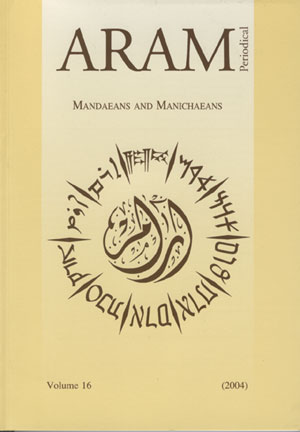 previous article in this issue previous article in this issue | next article in this issue  |

Preview first page |
Document Details : Title: The Sabi'ans as One of the Religious Groups in Pre-Islamic Arabia and their Definition through the Qur'an and Medieval Arabic Sources Author(s): SHAHLAR GASIMOVA, Aida Journal: ARAM Periodical Volume: 22 Date: 2010 Pages: 243-261 DOI: 10.2143/ARAM.22.0.2131040 Abstract : The goal of this paper is to give an account of the Sabians: one of the ancient religious groups that seems to have originated in Harran and penetrated to pre-Islamic Arabia circulating among the Jews, Christians and Hanifs. The focus of our prime interest is the etymology of the term 'Sabians' and the definition given to this group by the Qur’an (al-Baqara 62, al-Maida 69, al-Hajj 17) and also by tradition, especially the influence of the Sabians upon the cultural-religious life of Jahiliyya Arabs. From the testimonies of al-Tabari, ibn Kathir, al-Baydawi, al-Zamakhshari and other commentators on the Qur’an it became clear that this obscure religious-mystical group named 'those who believe' by the Qur’an had passed through several stages in its history from blatant idolatry to a monotheistic religious movement. They had sacred books, temples and religious rites such as prayer and fasting. The Sabians exerted an influence on the formation of various religious sects, particularly those of a mystical character. The Sabians’ faith and tenets were not alien to Jahiliyya Arabs. Besides the abovementioned Quranic ayats, this follows, in particular, from the references to this group in Jahiliyya poetry and later on in Muslim hagiography. Some authors find the influence of the Sabians on the religious thought of Jahiliyya Arabs to be the reason for the widespread worship of astral gods in pre-Islamic Arabia. This is especially the case with the cult of the Sun, which was much influenced by the Sabians’ faith. The Sabians paid great attention to geometrical figures, referring each figure to a special planet, and built sanctuaries of the heavenly bodies in the form of respective geometrical figures. It is quite possible that the sanctuary of Kabah had a quadrangular form due its being the Sabian temple of the Sun. There is evidence in Muslim hagiography that at the very beginning of Islam Muhammad and some of his followers (Abu Dhar al-Ghaffar and others) were called 'Sabians' by the Meccans. Focusing on the meaning of 'sabi,' which was originally derived from the Arabic root ‘saba’a ('those who reject one religion in favor of another'), some scholars were inclined to proceed from the literal meaning of such an appellation, although the similarities between the Sabian faith and Islam have always been obvious. Of particular interest for us is the comparison between the Sabians and the Hanifs given through 'Al-Milal wa al-Nihal' of Shahristani as a form of a discussion between the adherents of these two sects. This discussion reveals the main difference between them which appears in the method of union with God. Although Sabians rejected the idea of union between God and human beings, thus denying prophecy and developing the worship of angels – the only mediators between human beings and God – in to a special cult, it is paradoxical enough that they had their venerated prophets such as Enoch and John the Baptist. On the other hand, medieval Arabic sources depicted the Sabians as a sect closely related to Christianity. Some authors claim that the three star-led Magi who brought the gifts to the Divine Child were Sabians from Arabia. |
|


